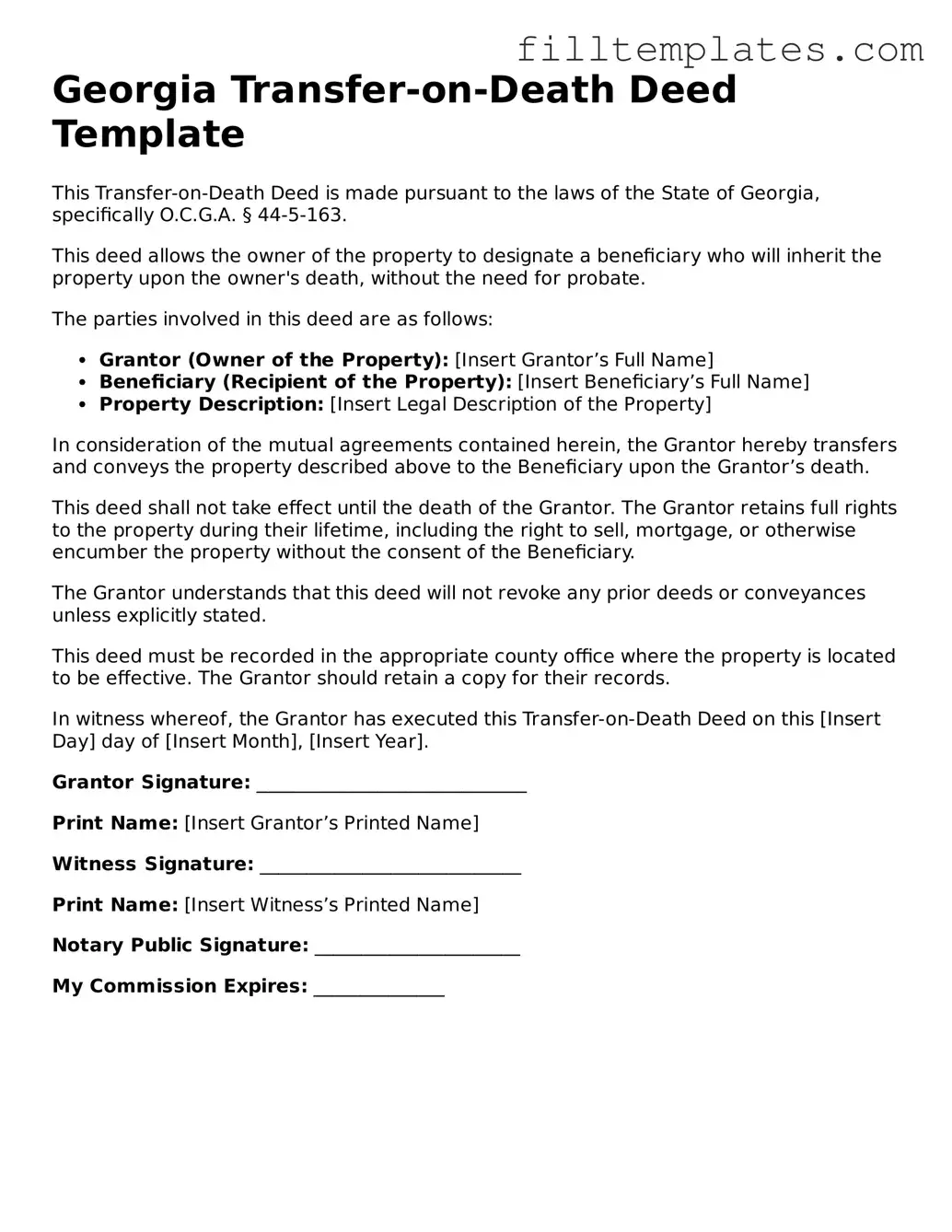Georgia Transfer-on-Death Deed Template
This Transfer-on-Death Deed is made pursuant to the laws of the State of Georgia, specifically O.C.G.A. § 44-5-163.
This deed allows the owner of the property to designate a beneficiary who will inherit the property upon the owner's death, without the need for probate.
The parties involved in this deed are as follows:
- Grantor (Owner of the Property): [Insert Grantor’s Full Name]
- Beneficiary (Recipient of the Property): [Insert Beneficiary’s Full Name]
- Property Description: [Insert Legal Description of the Property]
In consideration of the mutual agreements contained herein, the Grantor hereby transfers and conveys the property described above to the Beneficiary upon the Grantor’s death.
This deed shall not take effect until the death of the Grantor. The Grantor retains full rights to the property during their lifetime, including the right to sell, mortgage, or otherwise encumber the property without the consent of the Beneficiary.
The Grantor understands that this deed will not revoke any prior deeds or conveyances unless explicitly stated.
This deed must be recorded in the appropriate county office where the property is located to be effective. The Grantor should retain a copy for their records.
In witness whereof, the Grantor has executed this Transfer-on-Death Deed on this [Insert Day] day of [Insert Month], [Insert Year].
Grantor Signature: _____________________________
Print Name: [Insert Grantor’s Printed Name]
Witness Signature: ____________________________
Print Name: [Insert Witness’s Printed Name]
Notary Public Signature: ______________________
My Commission Expires: ______________
